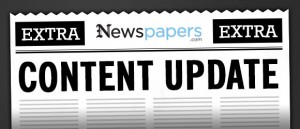Renewable Energy Credits
On December 31, 2013, the Residential Energy Credit expired. This credit allowed homeowners to deduct 15% of qualifying nonbusiness energy efficient improvements up to a maximum allowable credit of $500.00. While this credit has been allowed to sunset, the Residential Renewable Energy credit offered by the federal government will be in effect until December 31, 2016. The state of North Carolina offers a more generous Renewable Energy Tax Credit through December 31, 2015. These credits are available to any taxpayer installing eligible renewable energy technology on their primary residence. The two main viable sources of renewable energy available in North Carolina are geothermal heating and cooling systems and solar power. Both energy sources qualify for the Renewable Energy Credits.
Solar power has two options under the existing credits. If a homeowner installs a solar hot water heater, they are eligible for a 30% federal credit on the cost of the system including installation. There is no limit to the dollar amount of the federal credit. However, the federal credit does not apply to a heater for a swimming pool or a hot tub. The North Carolina credit is 35% of the cost of the system including installation. This credit has a cap of $1,400 but it can be used for a solar pool heating system.
The other solar option is the installation of photovoltaic solar panels. The photovoltaic panels actually generate power from solar energy. If a homeowner installs photovoltaic panels for their personal residence, they are eligible for a 30% credit on the cost of the system including installation with no dollar limit. North Carolina offers a 35% credit on the cost of the system including installation. The credit caps at $10,500. The combined credits can cover up to 65% of the cost of the entire system. Add that to the savings in energy costs and the breakeven time of a solar system becomes very short.
Another type of renewable energy that is eligible for the Renewable Energy Credit is a geothermal heating and cooling system. Any homeowner installing a geothermal system will also be eligible for a 30% federal credit on the cost of the system including installation. This credit, like the solar credit, has no dollar limitations. The state of North Carolina offers a 35% credit on the cost including installation. For a geothermal system, the credit has a dollar cap of $8,400.
For questions about either of these credits, please contact our office. Langdon & Company LLP would love to answer any questions you may have.




 On May 28, 2014, Financial Accounting Standards Board’s (FASB) released Accounting Standards Update
On May 28, 2014, Financial Accounting Standards Board’s (FASB) released Accounting Standards Update